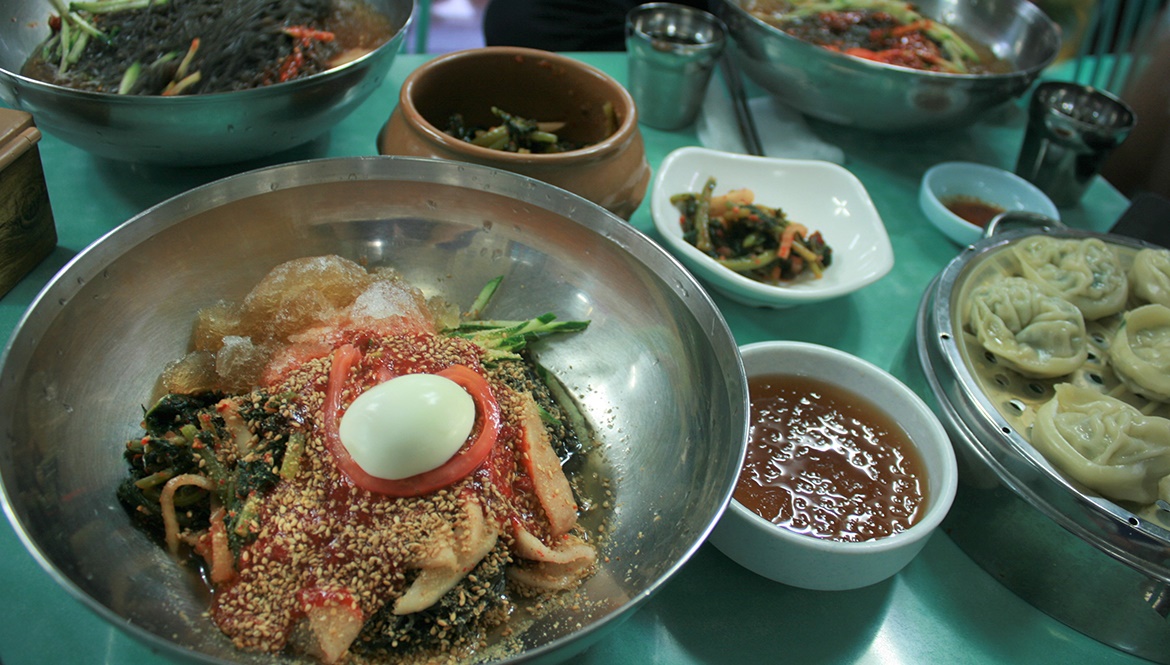Initial registration date : 2020.12.28 |
Date of final update : 2021.09.07 |
 162
162Incheon Unique Food Street -Noodles-
※ The information above may have changed since the initial registration date. Be sure to check before you travel.
Incheon is a place where many workers stayed when the port opened. To make cheap and ample food for the workers, various noodle dishes were created. The first jjajangmyeon (black bean noodles) was first created in Chinatown; Washbowl Naengmyeon Street in Hwapyeong-dong is famous for cheap and generous servings, and the Yongdong Kalguksu Alley is famous for its warm soup.

Chinatown Jjajangmyeon
Chinese people have visited Incheon Port since it opened in 1883, and it is now classified as a special tourism zone with many attractions. The 'Jjajangmyeon Museum' opened after the renovation of the Gonghwachun building, which sold jjajangmyeon for the first time in Korea. In this museum, you can see a lot of interesting things, such as the history of jjajangmyeon, the view of a kitchen that makes jjajangmyeon, and a model of an old Chinese restaurant. Aside from these, there are many famous places and shops such as Samgukji Mural Street, Sky Hill, Uisundang, and a Chinese-style shrine.
-
 Address12, Chinatown-ro 59beon-gil, Jung-gu, Incheon 22314
Address12, Chinatown-ro 59beon-gil, Jung-gu, Incheon 22314 -
 Phone+82-32-760-6478
Phone+82-32-760-6478 -
 Hours of OperationEveryday
Hours of OperationEveryday
Holidays : Open year round -
 Website
Website

Washbowl Naengmyeon Street in Hwapyeong-dong
The first naengmyeon restaurant in Hwapyeong-dong was established before the mid-1970s. Hwapyeong-dong naengmyeon is known as the 'Washbasin Naengmyeon.' In the beginning, the people working in nearby factories often asked for more servings of noodles, so the bowls got bigger when they offered generous servings. The characteristic of Hwapyeong-dong naengmyeon is the taste of cool young radish, and the flavor of the chewy noodles and the broth that matched the taste. Additionally, cold noodles are free of charge.
-
 Address2, Songhwa-ro 2beon-gil, Dong-gu, Incheon 22519
Address2, Songhwa-ro 2beon-gil, Dong-gu, Incheon 22519 -
 Phone+82-32-770-6524
Phone+82-32-770-6524 -
 Website
Website

Yongdong Kalguksu Street
Yong-dong is a place where villages sprung up during the Joseon Dynasty since here it had a great well offering a plentiful source of drinking water. During the Japanese colonial period, a famous brewery street was formed that used the clean and clear water, and thus there were many bars with Gisaengs (Korean Geishas). They sold green tofu chives to Gisaengs, and after the Gisaengs left, they made clam noodles for the drinkers to relieve their hangover. It was crowded with many people in the '70s and '80s but there are only a few places to eat Kalguksu left. The noodles are full of historical relevance but the most important characteristic of Yongdong Kalguksu is that it can be eaten with barley rice rolled up in warm soup, or mixed with young radish kimchi, which gives a feeling of fullness.
-
 AddressUhyeon-ro 72beon-gil, Jung-gu, Incheon
AddressUhyeon-ro 72beon-gil, Jung-gu, Incheon -
 Phone+82-32-760-6478
Phone+82-32-760-6478 -
 Website
Website









